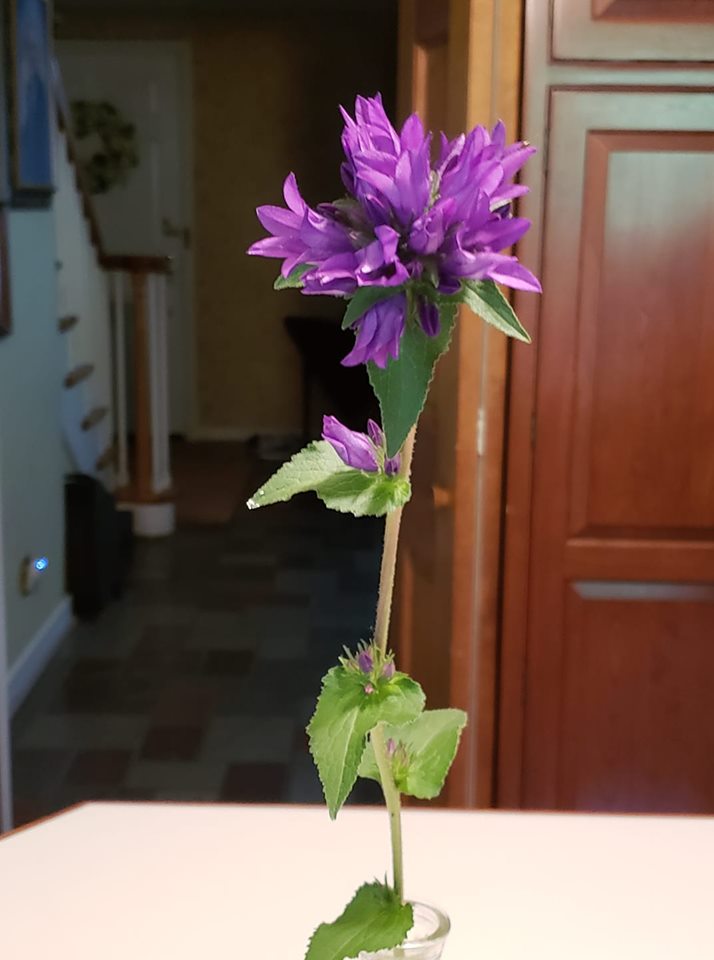Ask the Gardener: Virginia creeper, moving perennials, flower ID and more
Posted on: June 16, 2019 | Written By: Doug Oster |
Everybody Gardens editor Doug Oster gets asked a lot of questions. A lot. And he doesn’t mind offering gardening advice. But rather than just limiting those answers to the person who asked, we thought it might be a good idea to share that wealth of knowledge with everybody.
There are three ways to send in your questions:
- Email askdoug@535mediallc.com
- Submit your question on our “Your Garden” section of our site
- Send us a message on Facebook.
(The questions may be lightly edited for grammar/clarity/etc.)

Question 1: Virginia creeper
Nancy: Do you know how I can get rid of the poisonous Virginia creeper? It’s really starting to invade my yard! I definitely had a poison ivy-like reaction to it last year.
Doug: I didn’t originally think that Virginia creeper was poisonous, but I stand corrected. Some people CAN have a reaction similar to poison ivy when encountering the vine. I pull it off without protection. I think the best way to remove it is to cut it right at soil level, let the vines dry out and then pull them off. You don’t have to wait until they dry out, it’s just easier.
Since you are allergic to the plant, be sure you are wearing long sleeves and gloves if you’re going to try and remove it. Same technique, cut it at the bottom and let it dry out.
Question 2: Moving perennials
Patti: Is it to late to dig up and move perennials to different spots? I would like to move a Shasta daisy and a coreopsis, but it can wait till next spring if I must.
Doug: It always depends on the plant. I don’t like to move anything that’s blooming or getting ready to bloom. Those plants would both be happy to be moved in the fall, like if there’s a cool spell at the end of September, that would be good. That’s assuming they are both done blooming.

Question 3: Flower ID
Joyce: Could you please identify this plant? It blooms purple flowers that are so pretty. It is a perennial.
Doug: It’s a campanula, common name bellflower. I’m not sure which one though. The plant has many different shapes and sizes. EG readers suggested that it might be Campanula glomerata, either ‘Genti Blue’ or ‘Dane’s Blood.’
Question 4: Black spot
Jan: Is there any organic spray for black spot on roses, either a home mix or bought? I am trying my mix of liquid dish soap, baking soda, oil and water in a sprayer again this year. It worked one year but not the next, so I wanted to have an alternative ready.
Doug: I would recommend Serenade. It’s a great organic control for black spot and some other fungal issues. The Cornell Mixture is something you can make at home which is said to be effective against black spot and powdery mildew. Start with one gallon of water, add a tablespoon of horticultural oil, a tablespoon of baking soda and a drop of unscented dish soap. Most fungicides are most effective as a preventative.
Previous mailbags
Tree location, dying daffodils, plant ID and more
Tomato blight, reducing weeds, strawberries and more
Clematis wilt, lemon tree, container tomatoes and more
Harvesting garlic, cooler temperatures, bees and more
Unknown invasive, rhododendrons, mystery plants and more
Changing rose color, growing tomatoes, caterpillars and more
Leggy tomatoes, struggling plant, shrub IDs and more
Wildflowers, cicadas, tree identifications and more
Rabbit problem, discouraging dogs, geraniums and more
Cypress, wild garlic, gnats and more
More from Everybody Gardens
See also, Pollinator Week is June 17-23. Here’s How To Help The Good Bugs Thrive